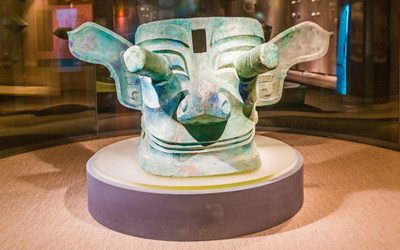Skype: neodalle-travel
Tel: +86 135 7447 2266
E-mail: sales@zhangjiajieholiday.com

 Early in the Shang and Zhou periods (1600 BC-256 BC), the present-day Sichuan had two states: One, founded by the Shu people, was in the west; and the other, controlled by the Ba people, was in the east. This explains the historical name of the province--Ba-Shu. As early as 4,000-5,000 years ago, the Chengdu Plain was the origin of the culture that arose in the upper reaches of the Yangtze River. The Plain was home to the Sanxingdui Culture and The Jinsha Site.
Early in the Shang and Zhou periods (1600 BC-256 BC), the present-day Sichuan had two states: One, founded by the Shu people, was in the west; and the other, controlled by the Ba people, was in the east. This explains the historical name of the province--Ba-Shu. As early as 4,000-5,000 years ago, the Chengdu Plain was the origin of the culture that arose in the upper reaches of the Yangtze River. The Plain was home to the Sanxingdui Culture and The Jinsha Site.During the period of Yingzhou Dynasty the area was known as "Bashu". Two kingdoms ruled today's Sichuan area, the Shu Kingdom occupied the west part; while the east part was controlled by Ba Kingdom. Ancestors of people in the Shu Kingdom were said to belong to the Qiang nationality who lived in the middle and upper reaches of the yellow river, who immigrated along the Minjiang River valley into the Sichuan Basin. According to legends, the first kings in the Shu Kingdom were Cancong, Yufu and Baiguan.
In 316 BC, Qin State, taking advantage of the war between the Ba Kingdom and the Shu Kingdom, sent General Simacuo and his army to Sichuan and conquered the two kingdoms.
The successive emperors in ancient China all chose Chengdu as the local administration center to govern the whole Sichuan area. Since Chengdu used to be the capital of Shu Kingdom, Shu became the shortened name for Sichuan.
 Ask Questions ?
Ask Questions ?